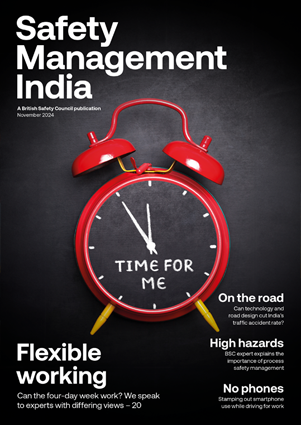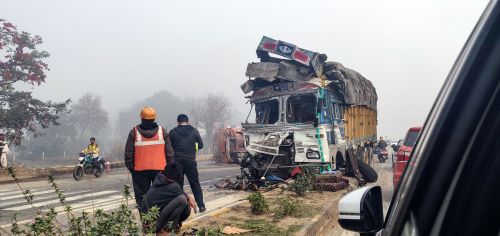From virtual reality training to apps that offer alerts and checklists, technology is playing an increasingly important role in ensuring the safety of work at height.
Features
There’s an app for that
Published in February 2019, the inquiry report of the All-Party Parliamentary Group (APPG) on Working at Height made six distinct recommendations aimed at preventing fatalities and injuries due to falls from height at work in the UK.
These were the introduction of enhanced reporting through RIDDOR (Reporting of Injuries, Diseases and Dangerous Occurrences Regulations 1995); the appointment of an independent body to record work at height near misses and accidents not qualifying for reporting under RIDDOR; an extension of the Working Well Together safety campaign to industries outside construction; the introduction of an equivalent system to Scotland’s Fatal Accident Inquiry process in the UK; a major review of work at height culture; and finally, the creation of a digital strategy to advance and improve safety techniques and practices in the work at height sector.
So, what are some of the latest developments in digital technology and virtual reality (VR) that have been developed by the 10 member organisations of the Access Industry Forum (AIF), and how are these contributing to height safety across a wide range of industries?
E-learning is already making a major impact in the work at height sector by giving delegates the opportunity to complete the theory section of a work at height course either from home or at work. The advantages are obvious: less time away from the workplace; delegates can proceed at their
own pace; knowledge and understanding can be checked at every stage of the learning process; and of course, the material can be watched and re-watched as often as required.
More recently, e-learning has been advanced through techniques such as gamification, where the typical elements of game playing are used to encourage engagement with a product or service. One such application is PASMA’s (Prefabricated Access Suppliers’ and Manufacturers’ Association’s) mobile access tower game which enables players to assemble a tower on their computer in a safe, virtual environment, in advance of assembling the same tower as part of an actual training course.
 The inquiry report of the All-Party Parliamentary Group (APPG) on Working at Height has called for a major review of working at height culture. Photograph: iStock
The inquiry report of the All-Party Parliamentary Group (APPG) on Working at Height has called for a major review of working at height culture. Photograph: iStock
Other developments include the use of VR simulators for testing the control, observation and decision-making of operators in scenarios which have been designed to be as life-like as possible. These graphically highlight the risks involved, but without physically exposing the operator to any of the inherent dangers.
Mobile apps
Not surprisingly, mobile apps are increasingly being used to keep people safe while working at height. For example, IPAF’s (International Powered Access Association’s) ePAL is a digital wallet that allows users to store and share their IPAF powered access equipment licences and qualifications.
It also provides operators with the very latest safety and best practice information for powered access equipment via their mobile phone. Other examples include PASMA’s mobile access tower inspection app (a step-by-step inspection checklist), and FASET’s (Fall Arrest Safety Equipment Training’s) own specialist app, which communicates safety alerts in real time to users of fall arrest safety equipment – such as safety netting systems.
Likewise, the Ladder Association has its own specialist app that provides one-tap access to the latest Ladder and Stepladder Code of Practice. In addition, an ‘on-demand’ webinar is currently available – ‘Ladder safety today: New guidance for employers’ – which, delivered in conjunction with the Health and Safety Executive, explains two newly published ladder safety guidance documents.
Also, NASC’s (National Access & Scaffolding Confederation’s) TG:20 scaffolding design software is now accessed via a dedicated online portal. This has replaced traditional printed guides and allows users in a friendly, visually intuitive way to produce a wide range of compliant standard scaffolding structures simply and quickly – without the need for a bespoke design. The NASC’s ePortal is accessible on computers, tablets and smartphones via a web browser.
Finally, no review of digital technology in the work at height sector would be complete without a reference to drones. Eliminating the risks from work at height by capturing data from the air, drones can be used to carry out internal and external inspections to identify the nature and scope of the work to be undertaken. Using accurate visual 3D models to decide the most appropriate access equipment needed for the task, they can be used in conjunction with BIM (building information modelling) to identify the work at height risks during construction.
The No Falls Foundation is the registered charity dedicated exclusively to the UK working at height sector. Its aims and objectives are actively supported by the Access Industry Forum (AIF) which comprises: ATLAS; EPF; FASET; IPAF; IRATA; Ladder Association; NASC, PASMA; SAEMA; and WAHSA.
For more information see:
Hannah Williams is Charity manager of the No Falls Foundation


FEATURES
Why changes to recycling legislation in England are an opportunity, not a burden
By on 12 November 2024

Road safety in India: could better road safety, vehicle technology and enforcement make driving for work safer?
By Orchie Bandyopadhyay on 10 November 2024
India has a poor road safety record, and research shows that commercial vehicles are a major contributor to the problem, with trucks estimated to be the single largest vehicle type involved in impacts leading to fatalities. We look at solutions that could make driving for work and the roads in general safer – from in-vehicle technology that warns truck drivers about unsafe behaviour to improving the design features of major highways.

